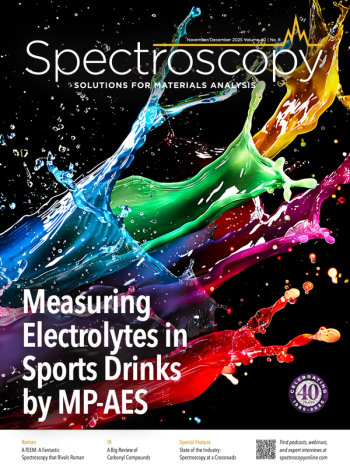
A Look at Spectroscopy and Food Adulteration: Current and Future Challenges
A recent study examined how spectroscopic techniques are being utilized in food adulteration applications, and what the future holds in this field.
Spectroscopic techniques, such as Raman spectroscopy, infrared (IR) spectroscopy, nuclear magnetic resonance (NMR) spectroscopy, and many others, are poised to be used often in food adulteration applications now and in the future, according to a recent article published in Trends in Food Science & Technology (1).
The food and beverage industry remains a key component to a nation’s economy and flourishing. These industries help consumers receive the necessary products that are essential for sustaining human life. In the food industry currently, one of the biggest concerns is food adulteration and fraud.
Food adulteration is the unethical practice of switching out good and quality ingredients in food with inferior substances (2). It is normally done for financial gain; by adding or subtracting certain ingredients to some food products, bad actors can make the food into a more addictive substance, normally to the detriment of the consumer (2). It is also used to increase profits by substituting inexpensive or poorly processed oils or sugars for high quality and more expensive ingredients. The economic incentives for food adulteration are great, but it comes at the expense of consumer value and health (2,3).
Recently, researchers from the National Institute of Technology in Odisha, India, examined how spectroscopic techniques are being used in this field to help combat the growing problem of food adulteration. In their review, they focus on how machine learning (ML)-based spectroscopic techniques detect food adulteration, and how they are being applied.
One of the techniques they focus on is IR spectroscopy. By analyzing the unique absorption spectra of various substances, IR spectroscopy can detect the presence of unwanted additives or contaminants in food products. Its non-destructive nature and rapid analysis make it a preferred choice for ensuring food quality and safety (1).
The researchers then discussed the utilization of ML with spectroscopic techniques. Providing the background information, the researchers discussed the importance of selecting the appropriate spectroscopic technique for detecting food adulteration. They stated that it is essential to understand the specific adulterant involved before choosing the technique to use (1). This is because each adulterant has unique physical and chemical properties that influence the choice of technique (1). Additionally, different spectroscopic methods have varying applications and approaches for detecting food adulteration.
To demonstrate the validity of the above statement, the researchers mentioned liquid state NMR spectroscopy, which is also used in determining food adulteration. However, to do so, the sample needs to be dissolved completely (1).
The research team concludes their study by discussing data augmentation, especially since the quality of the data is important for accurately determining adulteration in food. Data augmentation can handle data scarcity in adulteration detection, but there are no learning algorithms designed for adulteration detection (1). Developing a commercial spectroscopic adulteration detection system with ML requires optimizing the model, dataset size optimization, accurate pre-processing methods, precise feature selection and extraction, model selection, hyperparameters, and performance and validation criteria (1).
Although machine learning algorithms are advancing quickly, creating a specialized model for adulteration detection using spectroscopy remains a continuing research focus.
References
(1) Goyal, R.; Singha, P.; Singh, S. K. Spectroscopic Food Adulteration Detection Using Machine Learning: Current Challenges and Future Prospects. Trends Food Sci. Technol. 2024, 146, 104377. DOI:
(2) Haji, A.; Desalegn, K.; Hassen, H. Selected Food Items Adulteration, Their Impacts on Public Health, and Detection Methods. A Review. Food Sci. Nutr. 2023, 11 (12), 7534–7545. DOI:
(3) Mendes, E.; Duarte, N. Mid-Infrared Spectroscopy as a Valuable Tool to Tackle Food Analysis: A Literature Review on Coffee, Dairies, Honey, Olive Oil and Wine. Foods 2021, 10 (2), 477. DOI:
Newsletter
Get essential updates on the latest spectroscopy technologies, regulatory standards, and best practices—subscribe today to Spectroscopy.


